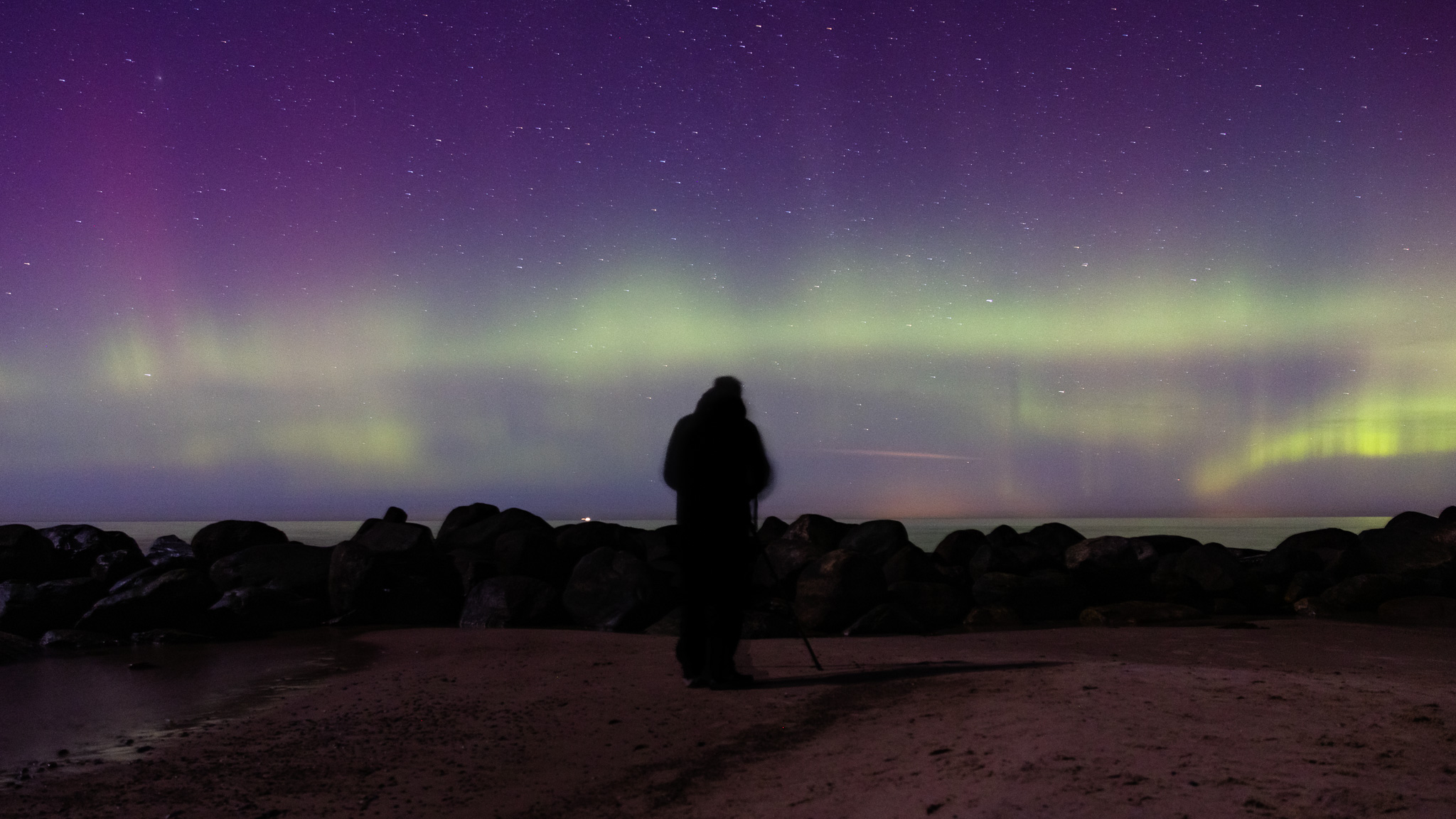We saw Northern Lights in Denmark!
It’s not normal for Danes to experience aurora borealis - Northern or Polar Lights - right in front of their own doorstep, but it does happen occasionally. So far, it hasn’t enticed us much to go hunting for this phenomenon in our own country - we live in a very light polluted area and would need to rent a car and scavenge for good locations every time an app spits out just a tiny chance for magical green light. And then it could still all be for nothing if weather and aurora gods work against you.
However, the last couple of days, solar winds have been strong and news sides and photographer groups rumored that the Northern Lights might become the strongest and most visible in Denmark for some time. Thus we spontaneously made the decision to rent a car and drive north to the coast, as far away from the city as possible.

While the lights were not as impressive as one regularly sees on photos and in videos of Iceland and Norway, they were still visible with the bare eye - and even stronger and more colorful in photos. Sometimes it was difficult to decide whether one wants to stare at the camera display in awe or at the sky.
How we photographed the Northern Lights
It was amazing to see how many people suddenly flooded groups and subreddits and asked for tips and support about where to go and what to do with one’s camera. So here is how what we did and how.
Preparation for photographing Northern Lights

Find out, when the chance for Northern lights is high. Depending on where you live, this can be pretty often, or - like in Denmark - pretty rarely. As the lights are most visible on a dark sky, the dark winter months are your best chance.
There is a variety of apps, that tracks and analyzes data for you and even throws a notification, when there might be a chance for Aurora Borealis. One of the most common ones is Aurora Alerts, it might be a little difficult to read, though. Some weather forecast apps and websites include that kind of data as well.
Where to photograph Northern Lights
Unfortunately, there is no guarantee for Northern Lights. There are some locations you can go where the chance is higher, though.
In our hemisphere, you should look north. And as the lights won’t cover the whole sky (this is different the closer you get to the polar circles), it helps to see the horizon. In Denmark, this usually means going to one of the Northern coasts, but just a high point might work just as well. Allegedly, someone made it to the helicopter patch of a hospital the past days!
And if your drone can do long exposure shots, that might be worth a try as well.

Gear
The most important tool you need to bring: a tripod. This goes both for big DSLRs and small phones. You will most likely be shooting long exposure (long shutter speeds) and to avoid motion blur from shaky hands, you want to place your camera on something stable - ideally a tripod.
A torch or similar light source might be helpful, too.
If it might be windy, remember to bring something to stabilize the tripod as well.

Camera and settings for photographing Northern Lights
There are no fixed camera settings that always definetely will produce an awesome photo. However, here are some general tips that will still help:
We found that it’s easier with a wide angle lens as it can capture more of the impressive sky and is more tolerant in regards to motion blur and wrong focus (something that was unexpectedly tricky!).
Long exposure is your friend for astro photography. Our photos are taken with a shutter speed of 10 - 20 seconds. It depends on how strong your camera is in regards to iso and how strong the aurora borealis is. It might also depend on whether you want to have star streaks or just dots for stars. Play around a bit - but you will want to stay on the longer side of shutter speeds. That’s also why you brought the tripod!
We can also recommend to make a timelapse that will beautifully capture the movement of the Northern Lights!
Luck, patience, timing
But mainly, photographing Northern Lights is all about luck. You need to be at the right location at the right time - the strength of visbility of the solar winds changes quite quickly. The weather needs to play along as well, and the combination of these can be frustrating to predict if you have to travel long distance on top of it.
We feel pretty lucky for being able to have experienced them as strong as we did -had we arrived just 20 minutes later, we might have been a bit disappointed.




